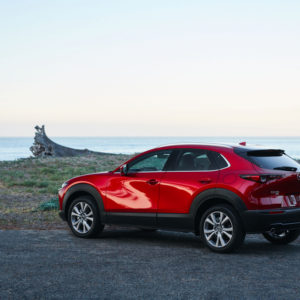Mazda is one of the automakers that have joined the growing list of companies venturing into the production of electric vehicles. And with the lack of research and available resources in this field, the road to EV success is proving to be a long and winding path.
In October this year, the Japanese automaker debuted its very first production electric vehicle: the MX-30. It combines an electric motor that makes 143 horsepower and a small 35.5-kWh battery for an estimated range of 130 miles between charges.
Almost immediately, the new MX-30 made news for having a smaller battery pack compared to other electric vehicles sold on the market.

To this, Mazda said that its goal for the MX-30 is to be an electric vehicle that focuses on the joy of driving rather than performance. The company also seemingly refuted claims that the battery pack was sized as such to reduce production costs.
In a recent interview with Automotive News, Christian Schultze, Mazda’s Director and Deputy General Manager for its European R&D center, said that the battery pack of the MX-30 is “responsibly” sized in terms of CO2 emissions.
Schultze further explained that the MX-30 is comparable to a diesel-powered Mazda3 hatchback based on a life-cycle assessment of total CO2 emissions and that even if owners end up having to replace the battery after 100,000 miles, the vehicle’s total CO2 emissions will still remain similar to a diesel Mazda3.
He also said that the use of a bigger battery pack, like a 95-kWh battery, on an EV would cause the vehicle to generate higher CO2 emissions from the beginning of the car’s life cycle. And when it comes time to replace the battery, it would generate more ecological footprint for the vehicle.
Any information provided on this Website is for informational purposes only and is not intended to replace consultation with a professional mechanic. The accuracy and timeliness of the information may change from the time of publication.














